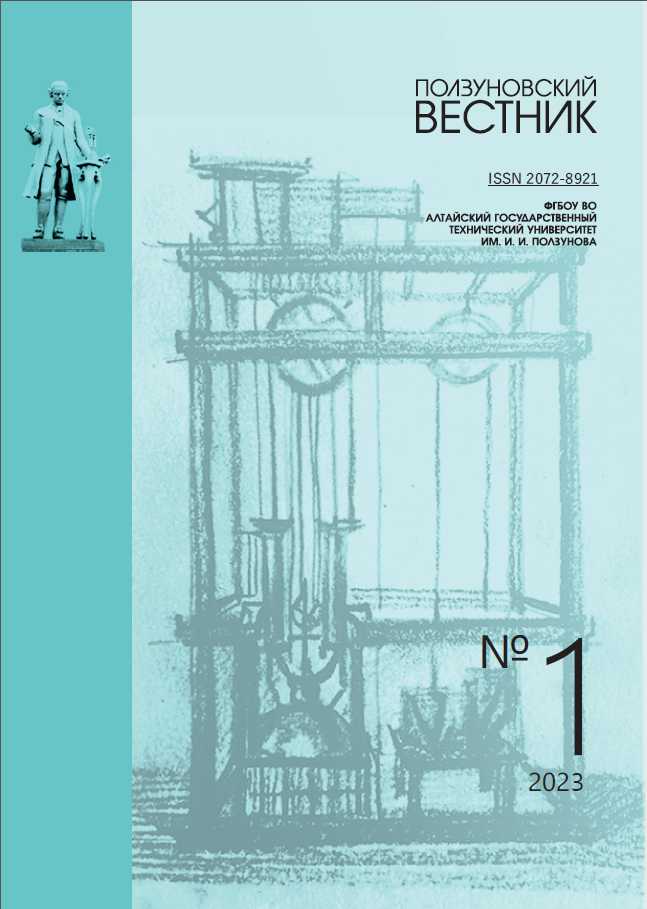ИЗУЧЕНИЕ БИОХИМИЧЕСКОГО ПОТЕНЦИАЛА МИКРОБНЫХ КОНСОРЦИУМОВ
DTQXGM
DOI:
https://doi.org/10.25712/ASTU.2072-8921.2023.01.001Ключевые слова:
пропионовые бактерии, кефирная закваска, молочнокислые микроорганизмы, консорциум.Аннотация
Приведён анaлиз научных данных об использовании пробиотических культур, возможности совместного культивирования штамма Propionibacteriumfreudenreichii Sh-85 и микроорганизмов кефирной закваски. Научно-исследовательским способом обоснована необходимость использования пропионовокислых бактерий с целью повышения пробиотических свойств кисломолочных продуктов. Выбор штамма Propionibacteriumfreudenreichii Sh-85 в качестве пробиотической культуры основан на таких аспектах, как выживаемость в агрессивной среде, адгезивные свойства, ценные производственно-технологические свойства. Главной особенностью пропионовокислых бактерий является комплексный биосинтез метабиотиков, а именно витамина В12, антимутагенов, антиоксидантов. Это усиливает их ценные биохимические и пробиотические свойства. Наиболее значимой, с точки зрения технологичности, «молочной» пропионовой бактерией является штамм Propionibacteriumfreudenreichii Sh-85, который может быть использован в работе самостоятельно и в сочетании с молочнокислыми бактериями. Исследования проводились на основе штамма пропионовокислых бактерий Propionibacteriumfreudenreichii Sh-85 и кефирной грибковой закваски. Установлено, что между пропионовокислыми бактериями и микрофлорой кефирной закваски в ходе совместного культивирования отсутствуют явления антагoнизма и взаимной конкуренции. В статье приведены данные о биoтехнологических и прoбиотических свойствах консорциумов (комбинированных заквасок) с различным сочетанием пропионовокислых и молочнокислых микроорганизмов. Контролем служила кефирная закваска. Во всех тестовых образцах количество микробных клеток Propionibacteriumfreudenreichii Sh-85 и молочнокислых бактерий к концу процесса ферментации достигает 109к.о.е./см3, что наглядно свидетельствует о высокой плотности микробной популяции и сбалансированном росте заквасочных микроорганизмов в консорциуме. Определен наилучший баланс пропионовокислых бактерий и грибковой закваски 1:1 с учетом биотехнологических и биохимических свойств, в частности синтеза витамина В12. Полученный консорциум может быть рекомендован для дальнейшего использования в биотехнологии ферментированных функциональных молочных продуктов
Библиографические ссылки
Шендеров Б.А., Синица А.В., Захарченко М.М. Метабиотики: вчера, сегодня, завтра. Санкт-Петербург : Крафт, 2017. 79 с.
Олескин А. В., Шендеров Б. А. Пробиотики, психобиотики и метабиотики: проблемы и перспек-тивы // Физическая и реабилитационная медицина, медицинская реабилитация. 2020. 2(3). с. 233-243.
DOI:https://doi.org/10.36425/rehab25811. URL: https://cyberleninka.ru/article/n/probiotiki-psihobiotiki-i-metabiotiki-problemy-i-perspektivy (дата обращения: 07.12.2022).
O’Mahony S.M., Clarke G., Borre Y.E., et al. (2014). Serotonin, tryptophan metabolism and the brain-gut-microbiome axis. Behav Brain Res, (277), Р. 32–48. doi: 10.1016/j.bbr.2014.07.027.
Butel M.-J. Probiotics, gut microbiota and health, Medecineet // Maladies Infectieuses. 2014. №1 (44), Р. 1–8. DOI: 10.1016/j.medmal.2013.10.002.
Parvez S., Malik K.A., Kang S. Ah and Kim H.-Y. Probiotics and their fermented food products are bene-ficial for health // The Society for Applied Microbiology, Journal of Applied Microbiology. № 100(6). 2006. Р. 1171–1185. doi: 10.1111/ j.1365-2672.2006.02963.x.
Тихомирова Н.А. Современное состояние и перспективы развития продуктов функционального назначения // Молочная промышленность. 2009. № 7. С. 5–8.
Решетник Е.И. Влияние компонентного со-става на пищевую и биологическую ценность ком-бинированного продукта / Е.И. Решетник, Е.А. Уточ-кина // Вестник ВСГУТУ. 2013. № 2(41). С. 63-67. – EDN PZDKZB.
Харитонов Д.В., Харитонова И.В., Просеков А.Ю. Разработка концепции создания синбиотиков и синбиотических молочных продуктов // Техника и технология пищевых производств. 2013. № 4. С. 91–94.
Патент № 2704857 Российская Федерация, Штамм лактобактерий Lactobacillusplantarum - ВКПМ – В-13052 продуцент молочной кислоты и антибиоти-ческих веществ и компонент закваски для производ-ства пробиотических продуктов / Цугкиев Б.Г., Рамо-нова Э.В., Соловьева Ю.В., Хозиев А.М., Кабисов Р.Г., Цугкиева И.Б., Петрукович А.Г., Ханикаев Д.Н., Абаева А.А.; Заявка 2018139600 от 08.11.2018. Опубл. 31.10.2019. Бюл. № 31.
Блинкова Л.П. Бактериоцины: критерии, классификация, свойства, методы выявления // Мик-робиология. 2003. № 3. С. 109–113.
Hong H.A., Due H.le, Cutting S.M. The use bac-terial spore formers as probiotics // FEMS Microbiol. Rev. 2005. Vol. 4. P. 813-835.DOI: 10.1016/j.femsre.2004.12.001.
Stein T. Bacillus subtilis antibiotics: structures, syntheses and cell death // Mol. Microbiol. Ibid. 2005. Vol. 4. P. 845-857.doi: 10.1111/j.1365-2958.2005.04587.x.
Abdel-Mawgoud A.M., Aboulwafa M.M., Has-souna N.A. Optimization of surfactin production by Ba-cillus subtilis isolate BS5 // Appl. Biochem. Biotechnol. 2008. № 3. P. 305–325.
Jamil B., Hasan F., Hameed A. Isolation of Ba-cillus subtilis MH-4 from soil and its potential of poly-peptidic antibiotic production // Pak. J. Pharm. Sci. 2007. Vol. 1. P. 26–31.
Muhammad S.A., Ahmad S., Hameed A. Antibi-otic production by thermophilic Bacillus specie SAT 4 // Pak. J. Pharm. Sci. 2009. Vol. 3. P. 339–345.
Boiarineva I.V., Zambalova N.A., Khamagaeva I.S. Technological aspects of innovative milk-based bioproducts. IOP Conference Series: Earth and Envi-ronmental Science // Earth Environ. Sci. 1052 (2022) 012069. on 24.08.2022 at 05:02. Р. 1–9.doi:10.1088/1755-1315/1052/1/012069.
Бояринева И.В. Теоретические и практиче-ские аспекты создания инновационных биопродук-тов для функционального питания с использовани-ем консорциума молочнокислых и пропионовокис-лых бактерий; автореф. дис. … д-ра техн. наук: 05.18.04. Улан-Удэ. 2020. 36 с.
Загрузки
Опубликован
Как цитировать
Выпуск
Раздел
Лицензия
Copyright (c) 2023 Ирина Валерьевна Бояринева, Ирина Сергеевна Хамагаева, Варвара Дмитриевна Стёпочкина, Виктория Ивановна Бобченко

Это произведение доступно по лицензии Creative Commons «Attribution» («Атрибуция») 4.0 Всемирная.

















 .
. Контент доступен под лицензией
Контент доступен под лицензией 
